Testing and Comparing Sablene Brushes
There's a new kid on the block, a synthetic watercolour brush called Sablene. It was developed to replace the need for natural sable which is generally regarded as the best watercolour brush because of its' capacity to hold a lot of water. I am testing the new Sablene brushes,comparing them to other types of brushes.
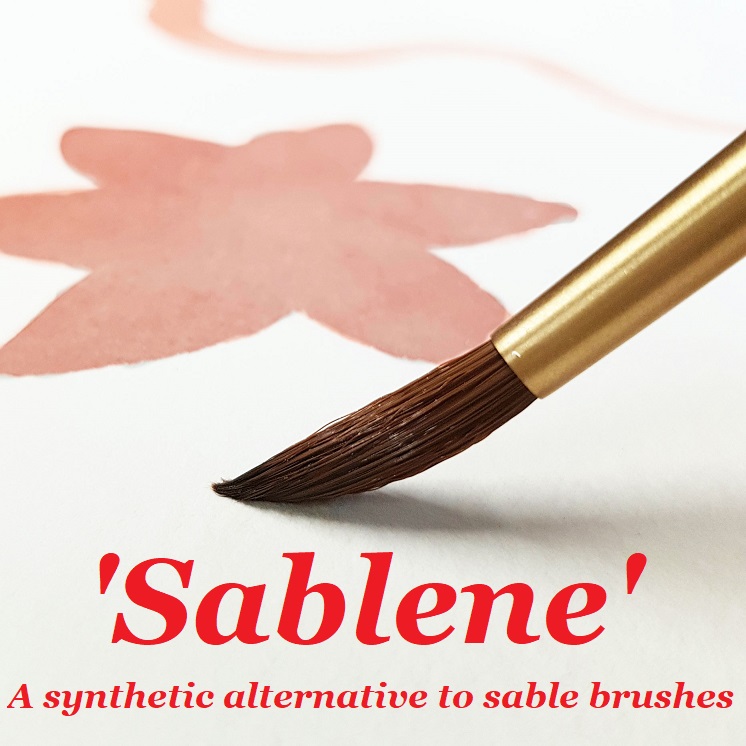
Sable vs Synthetic Hair?
The modern artist is always on the lookout for better tools. What's more, we are increasingly aware of where these tools come from and the impact we have on the environment, particularly on animals. Sable brushes have been regarded as the best watercolour tools due to their capacity to hold large amounts of water while having an excellent pointing ability. Unfortunately this comes at a great cost to the sable, the weasel-like creature that lives in Siberia. It doesn't do well in captivity which makes its farming difficult. The species is also threatened by extinction in its natural habitat because of fur hunting. Whilst there are plenty of synthetic alternatives for the vegan-minded artist, they rarely offer the same excellent properties as natural sable hair. So do we compromise our art or animal welfare?
Pro Arte has set out to solve this problem and developed a new line of synthetic filaments called 'Wave Synthetics'. The 'Sablene' brushes contain a mixture of grades and thickness which creates space between the fibres to hold more water than regular synthetics. They are soft and springy and are barely distinguishable from real sable hair. This is a very welcome addition to the synthetic brushes available to watercolourists and it seems like artists don't have to compromise on quality anymore should they wish to stay away from animal hair.
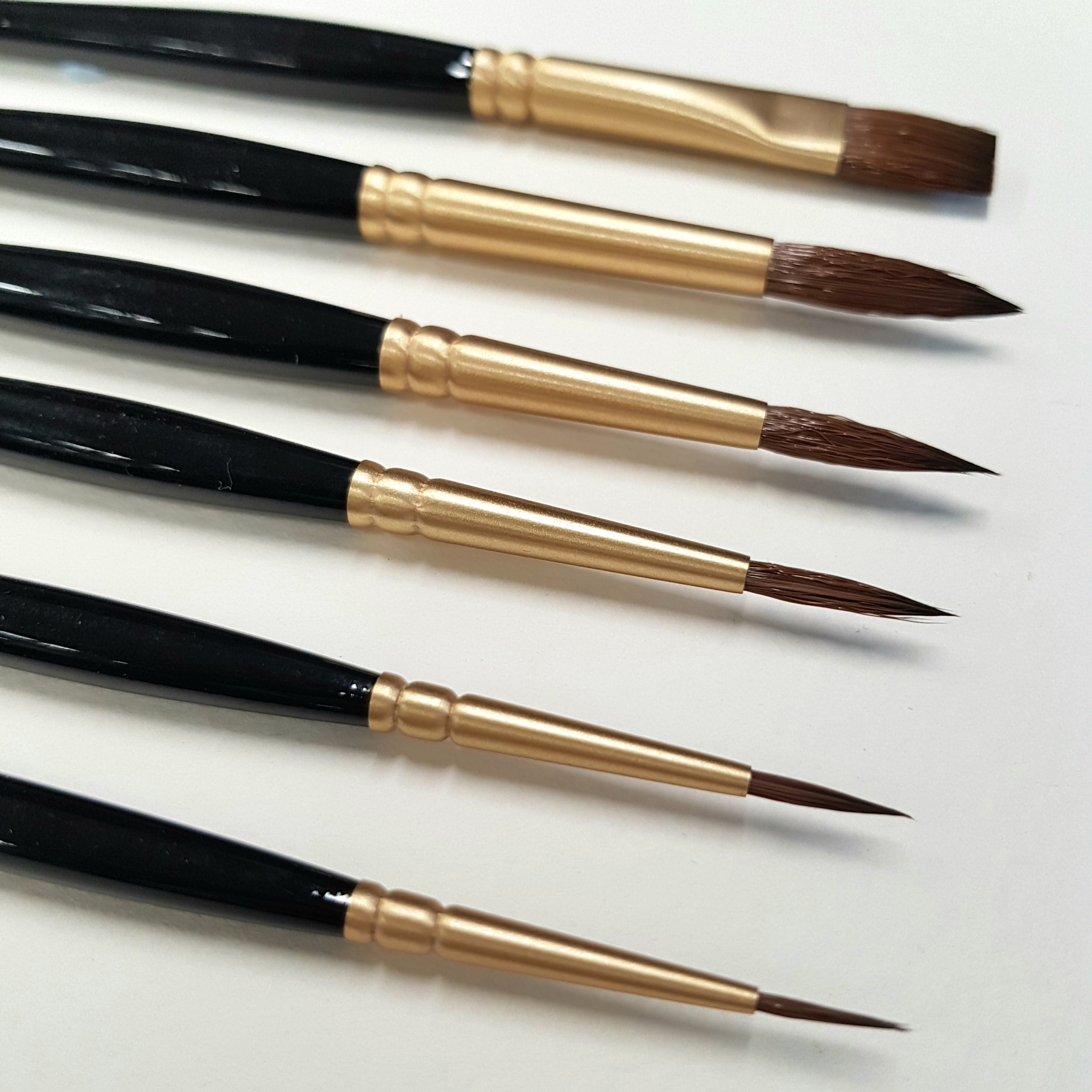
I wanted to compare Sablene to natural sable and to other synthetic brushes. Here is the complete list of the brushes I used for my experiments (from top to bottom on picture below):
Round 8 Pro Arte Sablene
Round 8 Lawrence Value High Quality Red Sable
Round 8 Pro Arte Prolene
Round 8 Da Vinci Universal Synthetics
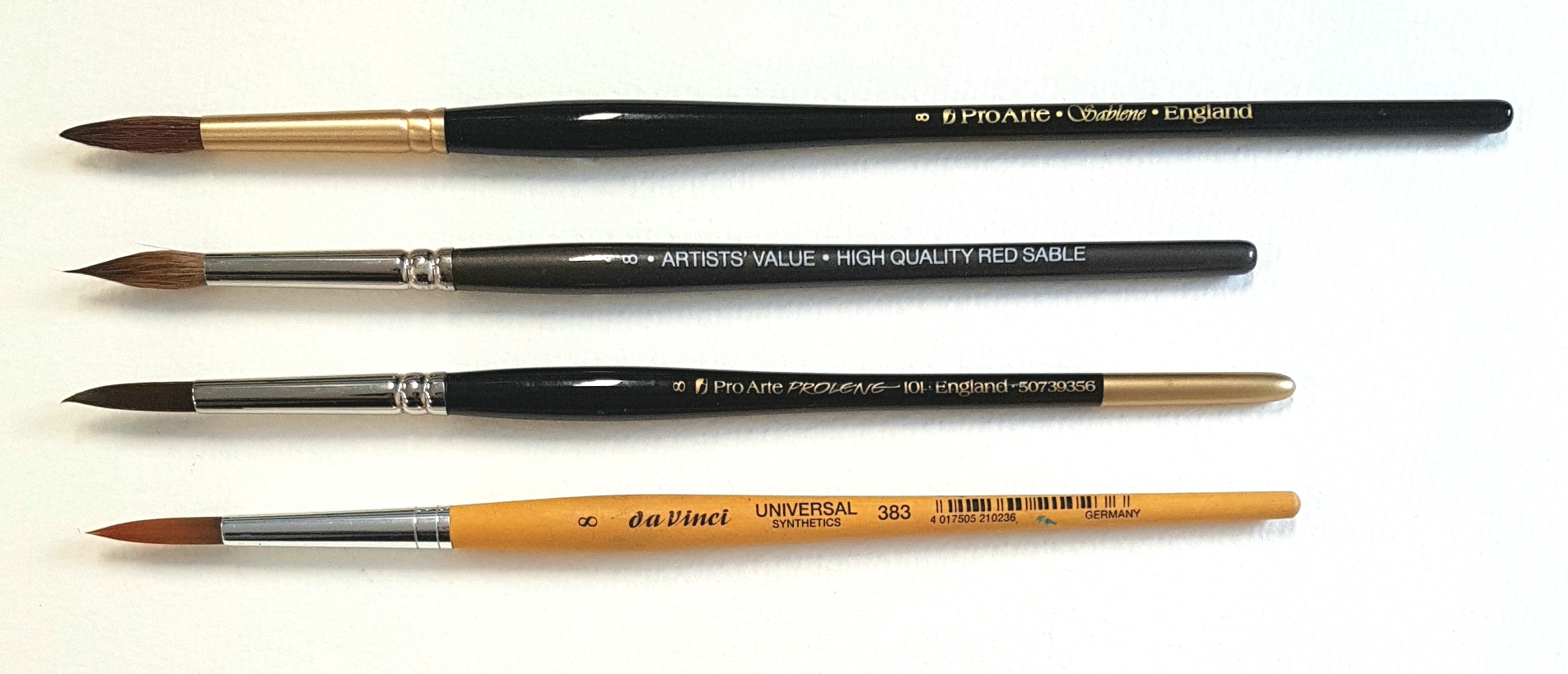
1. Appearance
I was pretty excited when I heard about these brushes as I always use synthetics even if that means I have to accommodate slight differences. Over the years I collected quite a few different types and learned to work around their limited capacity to hold water and often less pointed tips. The first thing that struck me about Sablene was its wavy hair and pleasant appearance: it has a shiny black handle and a rich gold ferrule. I immediately took a liking to it.
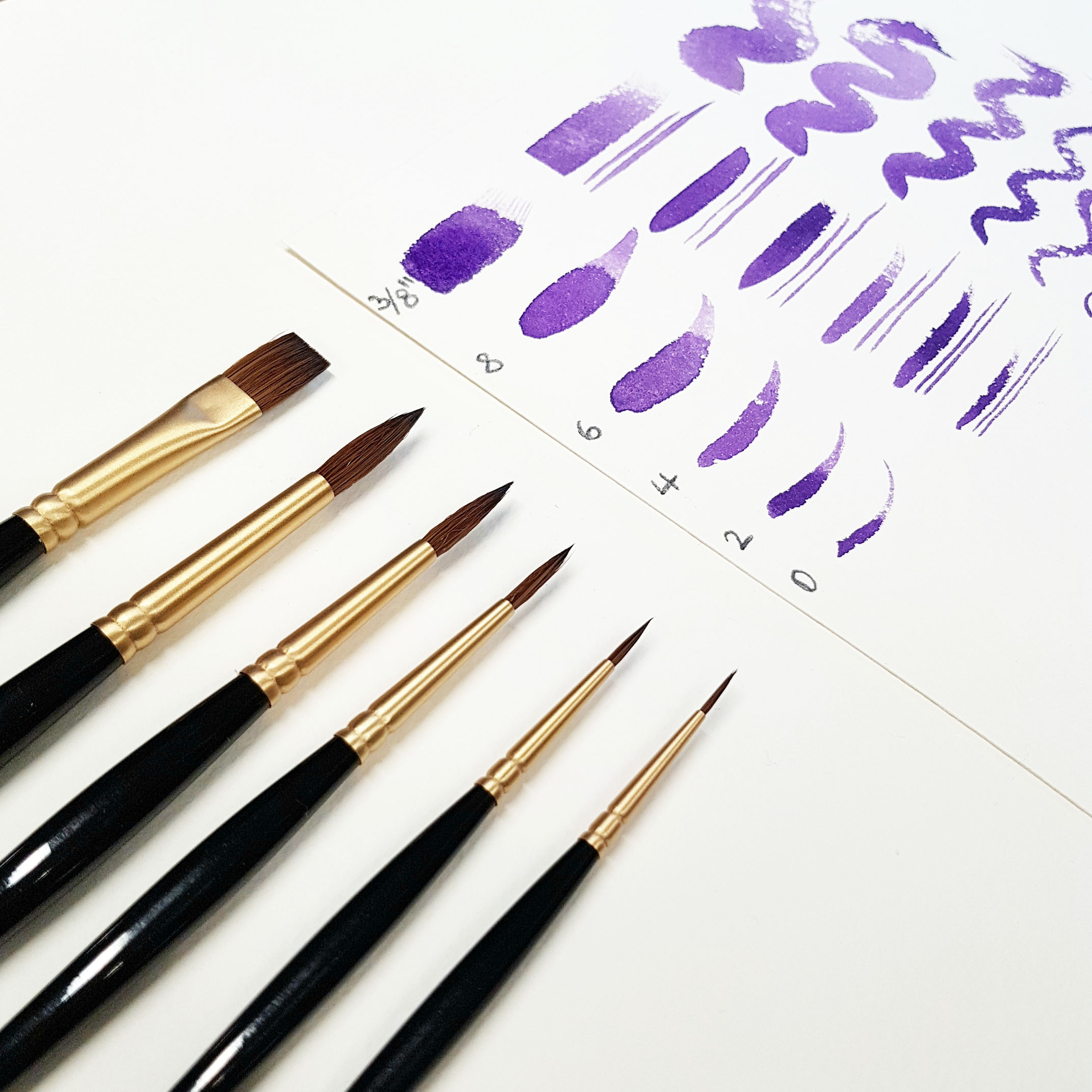
The two new sets offer 6 brushes each: round ones ranging from 0 to 8 and either a Round 10 or a Flat 3/4 inch one. For beginners I always suggest having a 3/4 - 1 inch flat brush as they are invaluable for washes and the edge can be used in a myriad of ways.
Sablene handles appear longer than most watercolour brushes. This is advantageous for landscape artists or anyone who tends to paint from a slight distance. The hairs are golden brown and darkening at the tips and contain a range of wavy and straight filaments. When dipped into water, sable hair tends to fan out and appear floating due to its light weight while synthetic fibres tend to stay flat. Sablene behaves much like other synthetic brushes and lifts off only a little under water which I thought was due to its thicker and more rigid fibres.
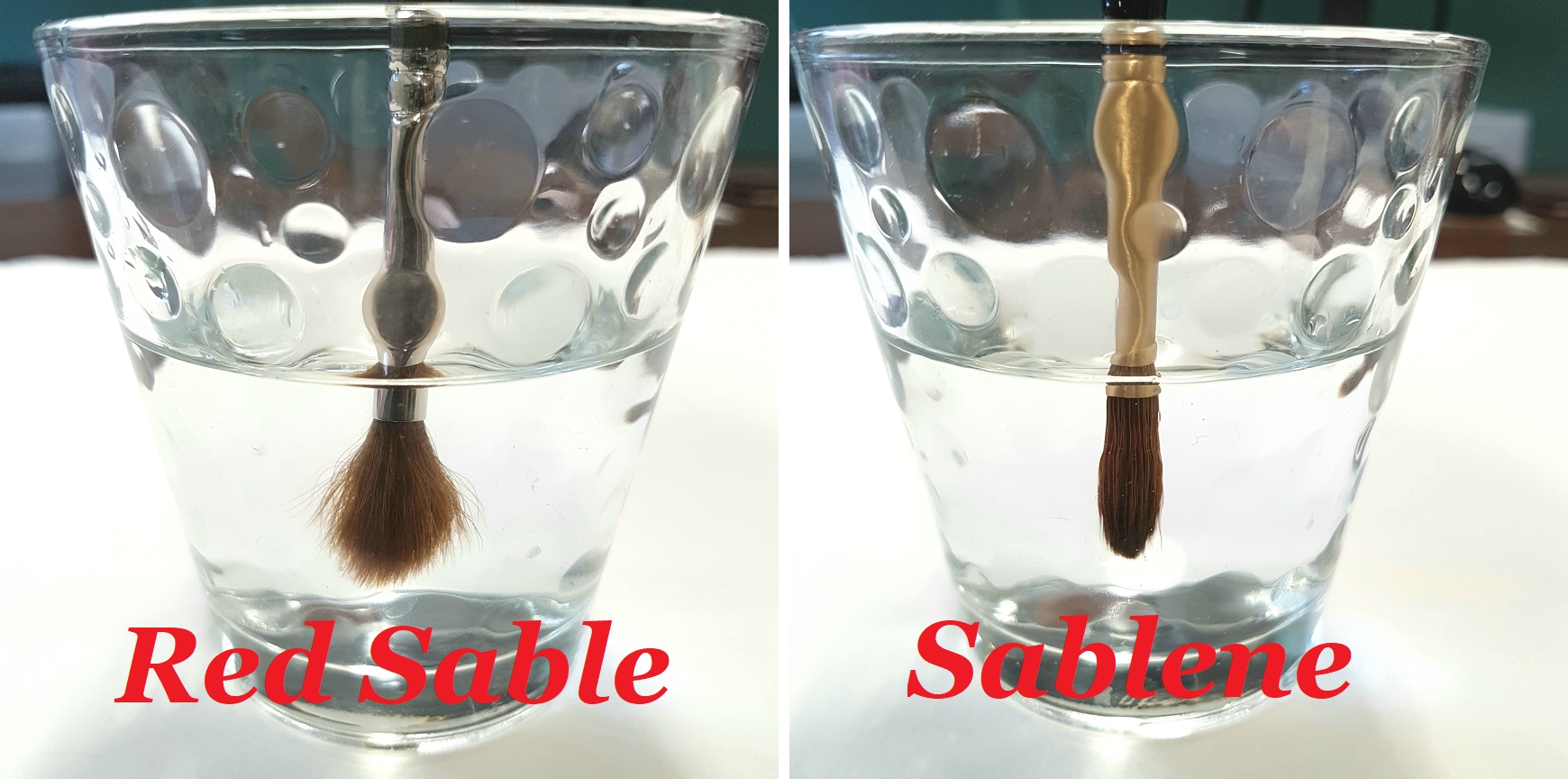
2. Body/Thickness
In terms of body, the Red Sable has the most classic shape with the pointed tip. The Sablene brush is similarly full looking, however, its tip is a bit less sharp. The Prolene and Da Vinci brushes (no 3 and 4 on image) look a lot less chunky and even though they are the same size, they appear smaller.
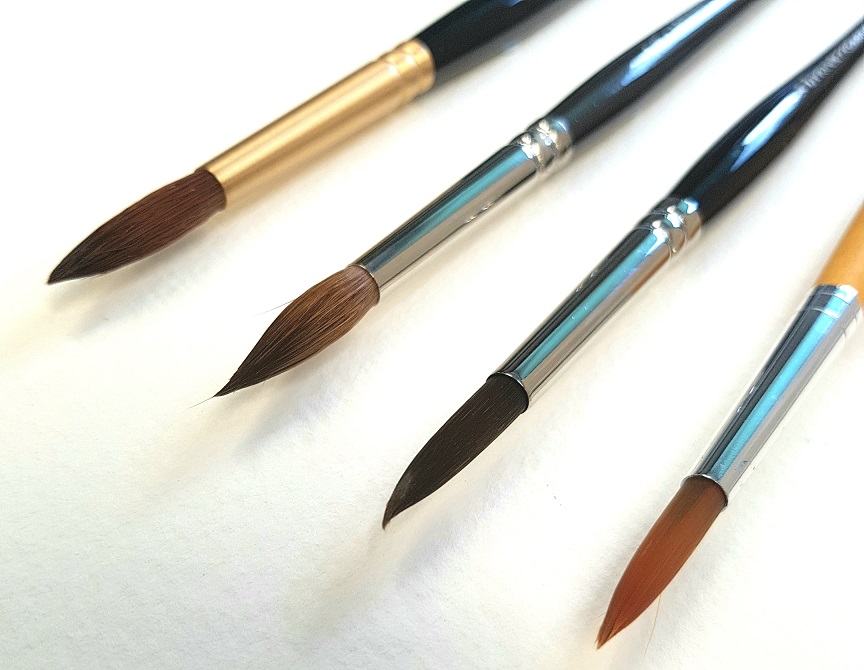
I decided to compare the fullness of the brushes in use to show how they behave on a wet palette.
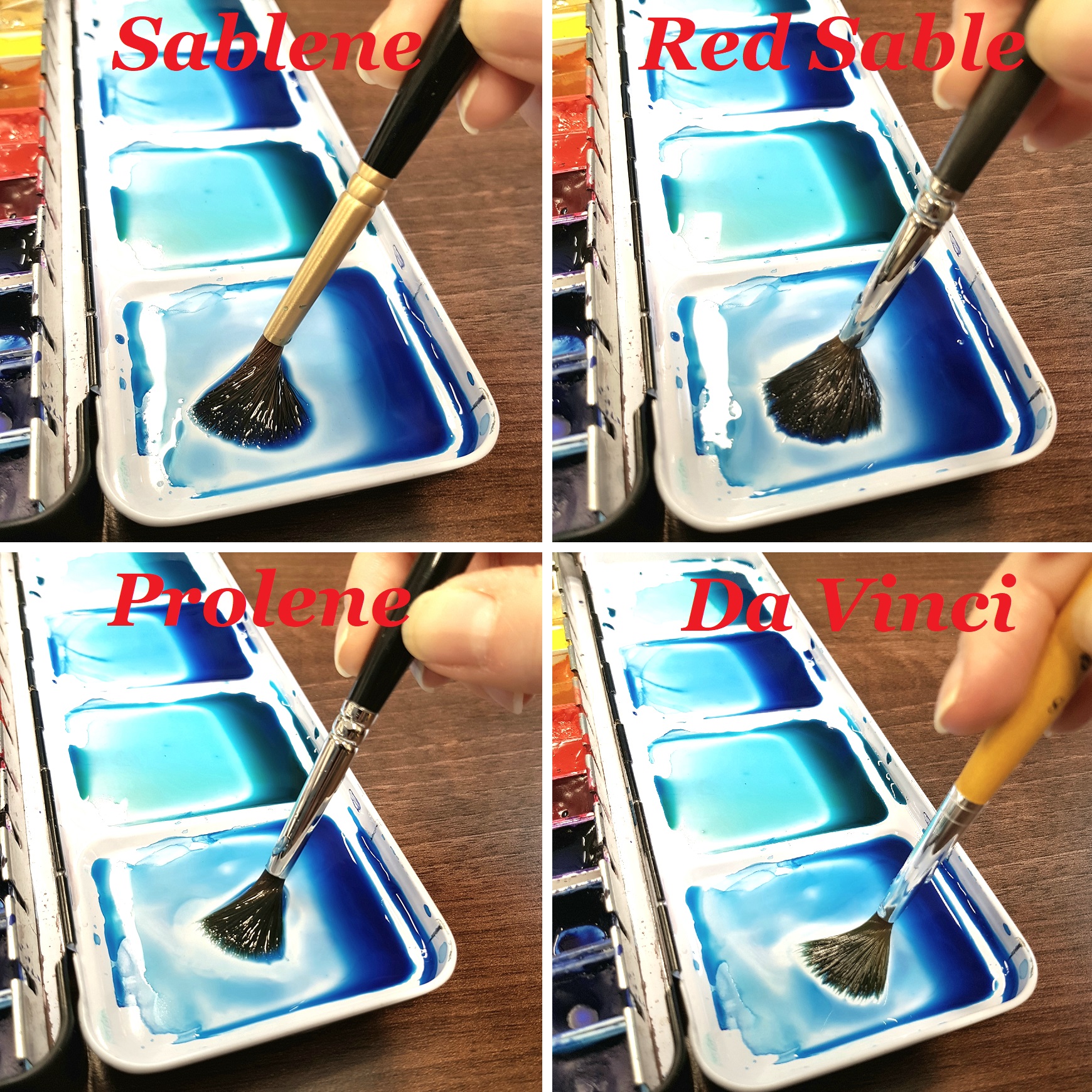
As the images suggest the Sable is the chunkiest, closely followed by the Sablene which appears a lot thicker than the other two synthetic brushes. This will greatly influence how much water they are able to absorb.
3. Water Holding Capacity
I used Khadi watercolour paper (NOT) and Old Holland Watercolour paints for the tests that follow. My most important task was to assess Sablene's ability to hold more water than other synthetics and to see if it comes any closer to the capabilities of Red Sable brushes. Here are my results.
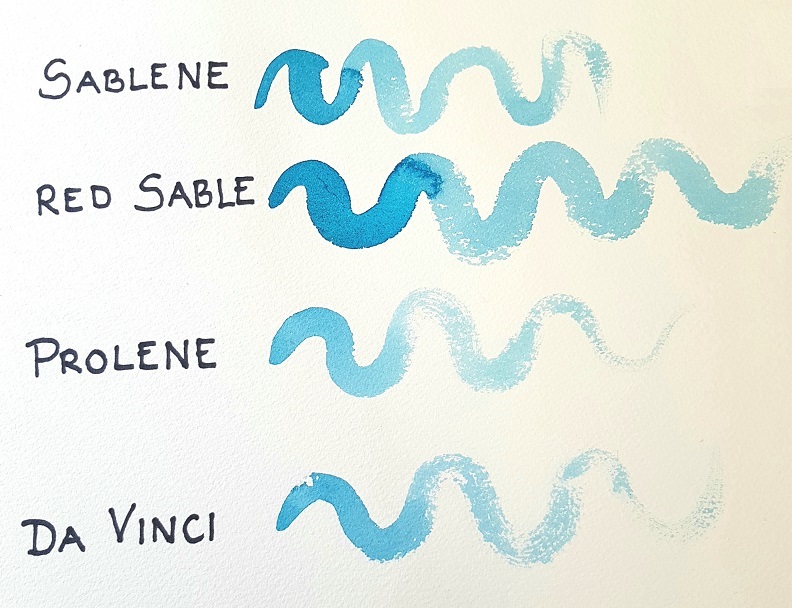
Perhaps not surprisingly the Sablene does not beat the Red Sable when it comes to absorbency. However it does appear to go further than the other two synthetic brushes. Both Prolene and Da Vinci felt and looked drier much earlier, resulting in the dry-brush effect towards the end of the stroke. Interestingly, both Sablene and Red Sable had a little puddle at the start that took longer to dry (which is visibly missing with the other two synthetics). This suggests that they were loaded with more water to start with and have a fuller, more absorbent body.
4. Colour Intensity
This category is meant to test the brush's ability to pick up pigments from the palette and help create intense colours. I prefer working from a palette that is set up with a range of dry half pans rather than with fresh paint straight from the tube. This makes picking up pigment a bit harder for any brush.
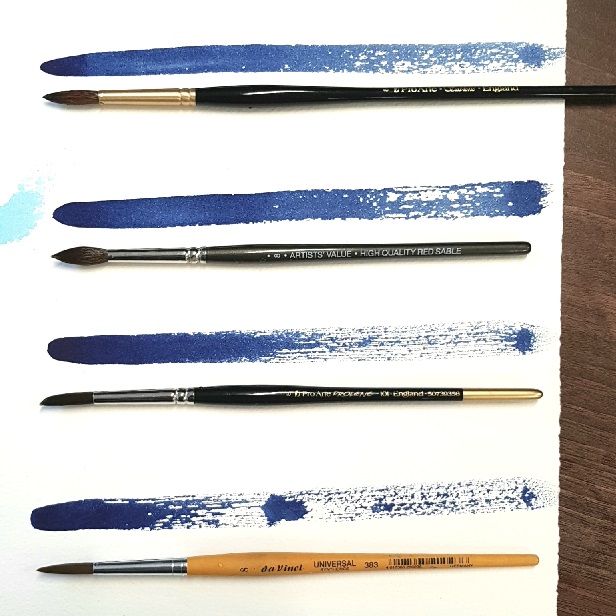
As expected, the Red Sable did really well on the test with an even application of the pigment throughout the brush stroke. Prolene came in as a close second with a great intensity at the beginning. The Sablene started out very intense and gradually faded as it ran out of water. Da Vinci came last with its intense but very short brush stroke.
5. Pointing Ability
A great point is very important for a watercolour brush and it is expected to be able to draw fine lines even with the thickest of brushes. Natural Sable is known to have a sharp point while synthetic fibres may over time feather out and the brush's point may shift from the middle to one side. I noticed this happening with my cheapest synthetics when I started watercolours and this was usually due to my leaving them under water for days or letting them dry point down (which you should never do as it bends the filaments).
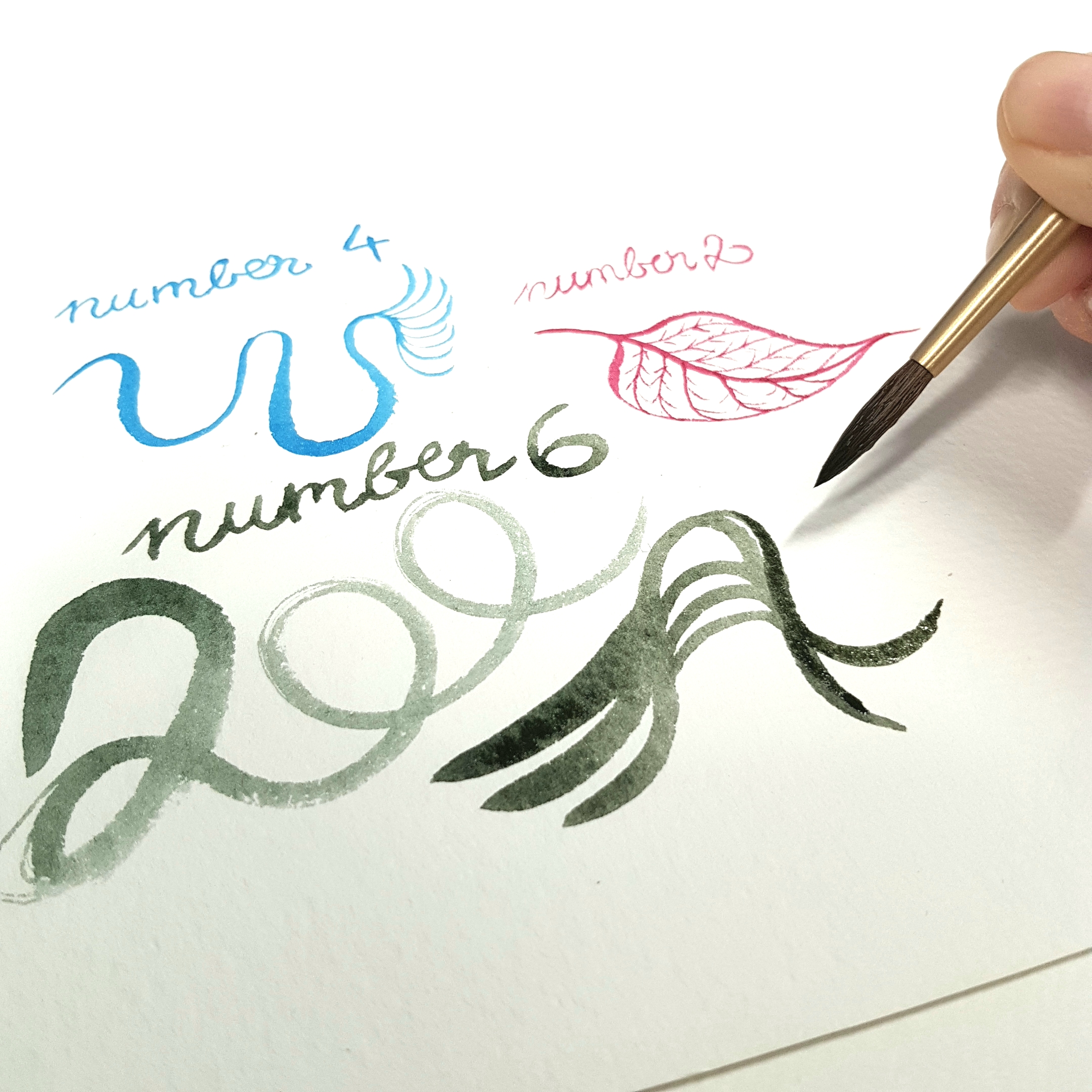
I was a bit worried about the Sablene here as the brushes looked quite fuzzy when dry but once I dipped them into the wash their points became much more pronounced. All three sizes tested behaved wonderfully and I was able to create lines ranging from thick to very thin with ease. I only noticed separation of the fibres when the brush started to dry. The brushes felt firm and springy which helped me feel more in control of the lines.
6. Springiness
As sable hair is very fine and soft, it naturally has less spring. Synthetic brushes tend to be quite springy which make them perfect for fine detail. After my previous tests I suspected Sablene to do well on this one as it felt much more stiff than Red Sable.
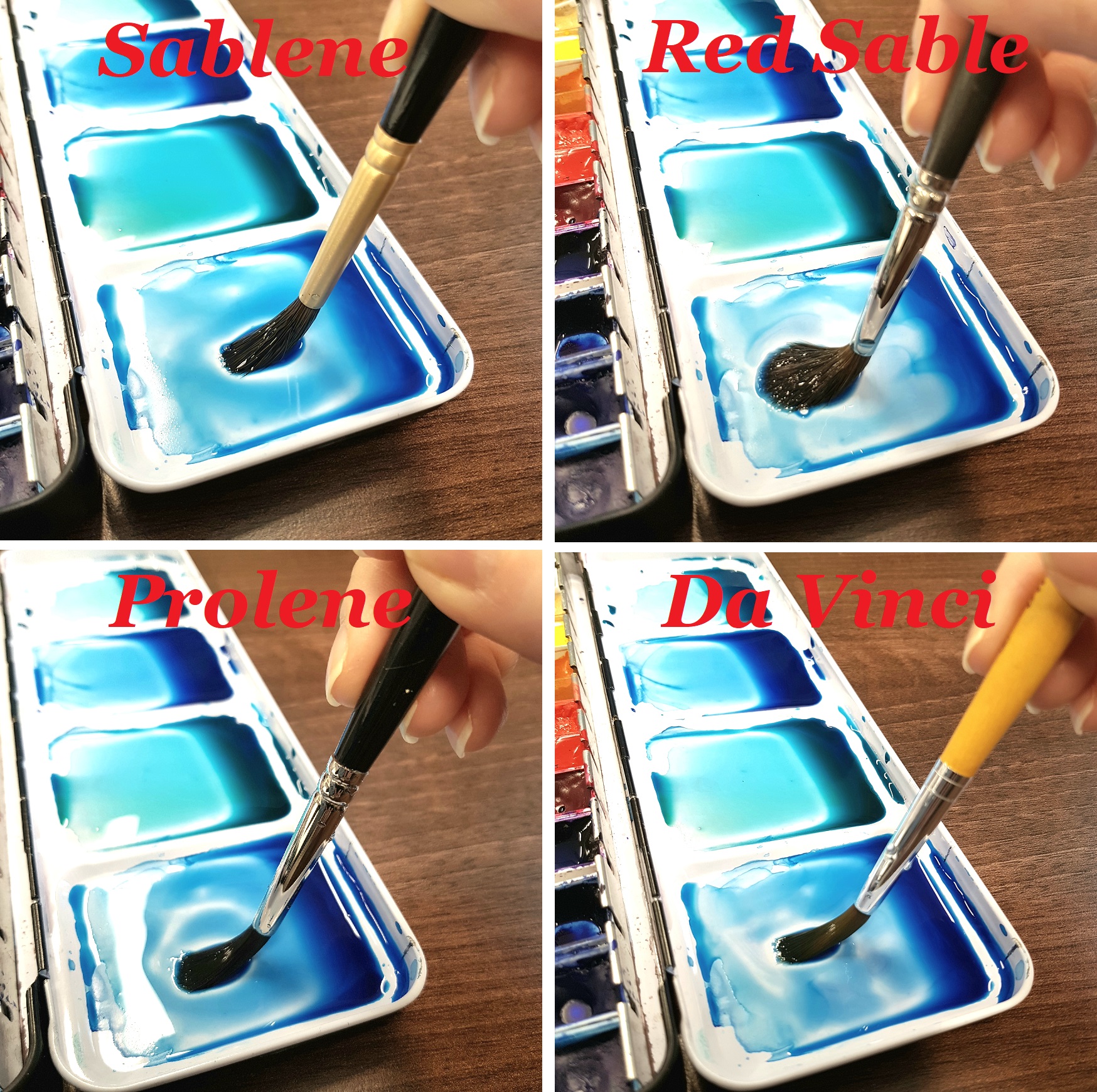
As you can see Red Sable spreads out on the palette when pressed rather than bounce back like the three synthetic brushes. The Prolene and Da Vinci brushes bend in a perfect curve and I know from my experience using them that they are nice dynamic brushes. The Sablene brush has a nice curve too and it doesn't flatten on the palette like the Red Sable despite its chunkier body. It feels firm in my grip and gives more control over my movement which is something that I often miss with other synthetic brushes.
Summary
Pro Arte's Sablene brushes are an excellent addition to the synthetic watercolour brush range, bringing together many great qualities of both synthetic and natural hair varieties. It is thicker than the other two synthetics I compared it to and holds much more water. It has a great point and it's very flexible which makes it excellent for a variety of marks and for fine detail. It picks up pigment and paint effortlessly and it creates intense brush strokes.
Artists that are looking to expand their brush range with a new synthetic brush will find Sablene a great addition to their repertoire and I can recommend it to anyone looking for sable alternatives. Whilst Sablene does not beat Red Sable in all aspects (its water holding capacity is still unchallenged), it comes very close to being a perfect watercolour brush with the added bonus of being animal friendly.
All items mentioned in this article can be purchased through our website www.lawrence.co.uk, in our Hove Shop or by calling us on 01273 260260 ext 1.






